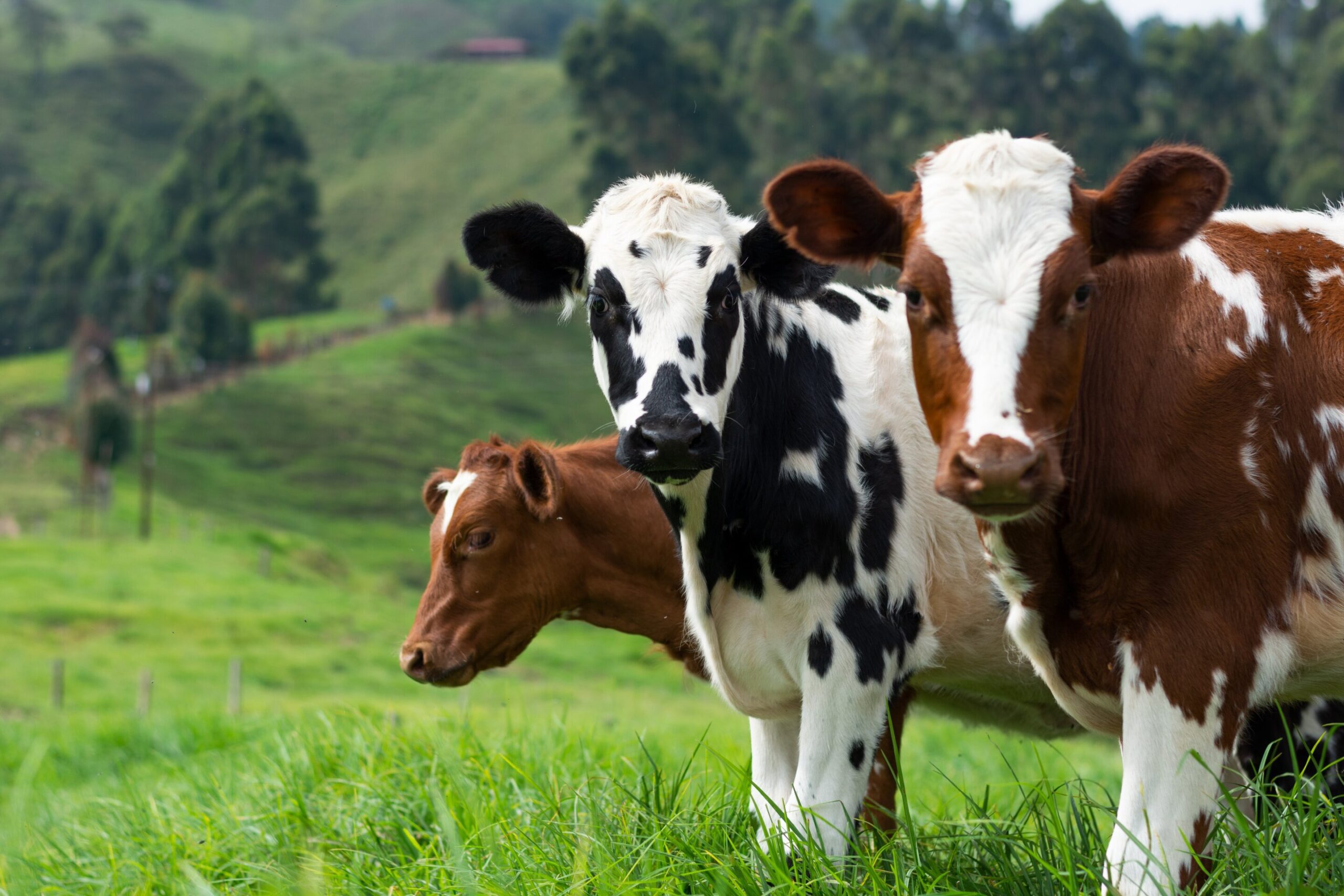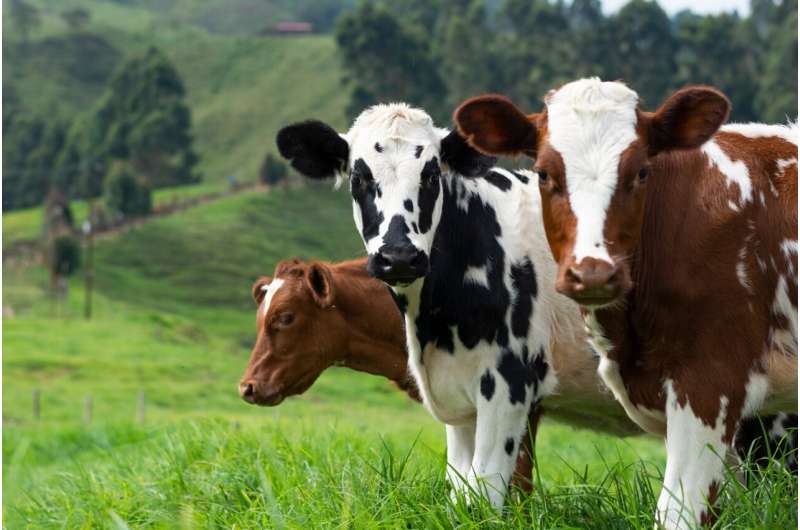

Health authorities are working to gather information on the spread of the H5N1 virus, or bird flu, in U.S. dairy cows—the first confirmation of the virus in cattle.
“We have moved into new territory,” says Thomas Gillespie, professor and chair of Emory University’s Department of Environmental Sciences.
The dairy cow infections are simply the latest twist in a global pattern: since 2022, bird flu has been infecting a wide variety of mammals.
“You can find this trend around the world, almost anywhere you look,” Gillespie says. “This virus has an extremely broad range of hosts that it is able to infect.”
Gillespie is a disease ecologist, studying how pathogens jump across species in the environment. He is a leader in the “One Health” approach—considering the deep connections between the health of people, domesticated animals, wildlife and ecosystems—to build pandemic control and prevention.
Current risk to people is ‘low’
The avian influenza cases in cows have been mild. The U.S. Centers for Disease Control and Prevention (CDC) has confirmed two human cases connected to the outbreak—one in Texas and one in Michigan. Both cases were mild and involved people who worked on a dairy farm.
The pasteurization process kills the H5N1 virus, and the CDC describes the current risk to the general public as “low.”
The H5N1 virus is known as avian influenza, or bird flu, because birds are its natural reservoir. Wild, migrating birds can spread H5N1 globally. The current version has been circulating since 2020 and has infected a greater diversity of bird species than past lineages.
The virus has been reported in birds in the United States since 2022. Poultry producers have culled millions of their animals to try to control the spread of the virus.
Massive die-offs of seals and sea lions
It has long been known that mammals can become infected with H5N1 when they eat infected birds or are exposed to environments contaminated with the virus. What is unprecedented is the current scale and variety of mammals that have been infected.
“Most of these are likely dead-end cases, where a predator eats an infected bird and gets sick but doesn’t spread the virus,” Gillespie says.
He adds, however, that recent die-offs of thousands of elephant seals, sea lions and fur seals in South America caused by bird flu raises concerns about the possibility of mammal-to-mammal transmission.
“Not enough surveillance is done in wildlife to know for sure how the virus is spreading,” he says.
H5N1 has also been reported in foxes, otters, lynx, polecats and badgers in Europe and in raccoon dogs and foxes in Japan.
The U.S. Department of Agriculture has recorded detections of H5N1 in 200 mammals in the United States since 2022, including a bottlenose dolphin, foxes, bobcats, mountain lions, coyotes, skunks, harbor and gray seals, opossums, squirrels, minks, otters and black and brown bears.
Last December, a polar bear on Alaska’s North Slope became the first of its species known to die of avian influenza. In 2023, the virus was also been detected for the first time in the Antarctic region—in birds, elephant seals and fur seals—raising fears for the health of the fragile ecosystem.
A long-term view of risks
“Some of the species that are at risk for bird flu are already battling the stressors of climate change and loss of habitat,” Gillespie says.
And each time H5N1 infects a new animal host, it gives the virus a chance to mix with other flu strains and rearrange its genetic material. Accumulating such mutations can change the virus in ways that make it more easily transmissible and more deadly—including to humans.
Pigs’ immune systems share similarities with humans, making swine especially efficient mixing bowls for viruses that can affect humans.
Gillespie cites deforestation and industrialized animal production as major drivers for the risk of pandemics as well as climate change.
Forests in tropical regions are rapidly degrading due to cattle ranching and the clearing of land for agricultural crops such as soybeans—which are mainly used as feed for chickens and pigs on industrial farms.
“The resulting cheap meat that we buy does not reflect the true costs to the ecosystems that sustain us,” Gillespie says. “If we want to live sustainably, we need to cut down on the amount of animal products that we consume. That will be a win-win for human health and for planetary health.”
Provided by
Emory University
Citation:
US dairy cows are tip of the iceberg as bird flu spreads in mammals globally, says ecologist (2024, May 27)
retrieved 27 May 2024
from https://phys.org/news/2024-05-dairy-cows-iceberg-bird-flu.html
This document is subject to copyright. Apart from any fair dealing for the purpose of private study or research, no
part may be reproduced without the written permission. The content is provided for information purposes only.